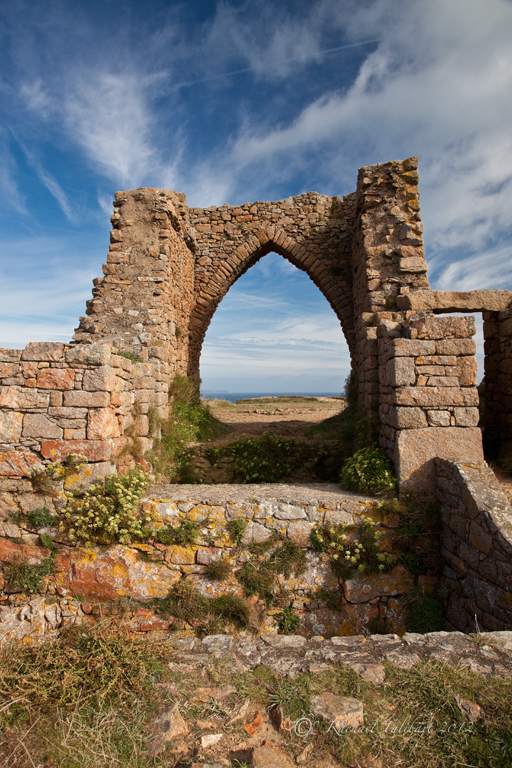Our visit to Jersey gave me an opportunity to add to my castle series. Grosnez Castle was built in the 14th century. Little remains of the castle but it makes a very atmospheric ruin, perched atop the headland at the Northwest corner of the island.
‘Grosnez’ comes from the old Norse, grar nes, meaning ‘grey headland’, rather than the French for ‘big nose’. According to an interpretation board at the site, the castle was probably built in around 1330. It was taken by the French in 1373 and 1381 and was likely demolished during or shortly after the French occupation of 1461-8.
The castle certainly has a commanding view of the Jersey coast. Just along the headland stands another martial construction taking advantage of those views, a German WW2 range-finder tower, part of Hitler’s ‘Atlantic Wall’.
It is a strangely forbidding construction, a stark contrast to the tapestry of heather and wildflowers at its base. The two structures together are a reminder of Jersey’s history of occupation, straddling some of her most beautiful landscape.






